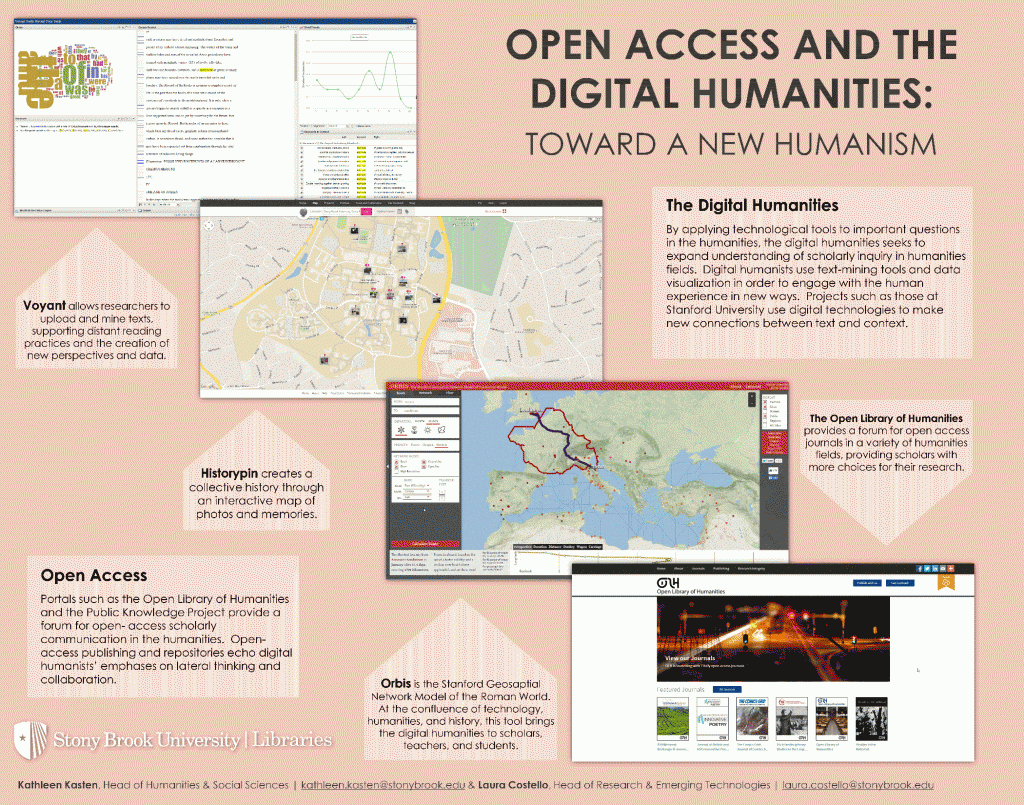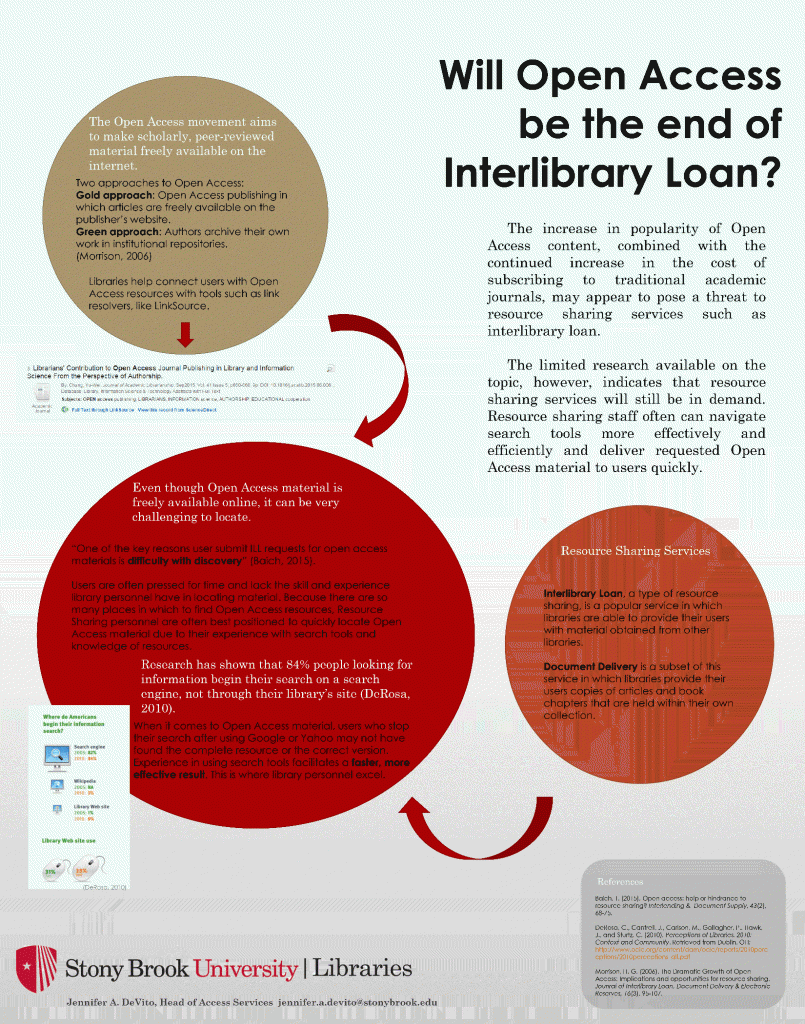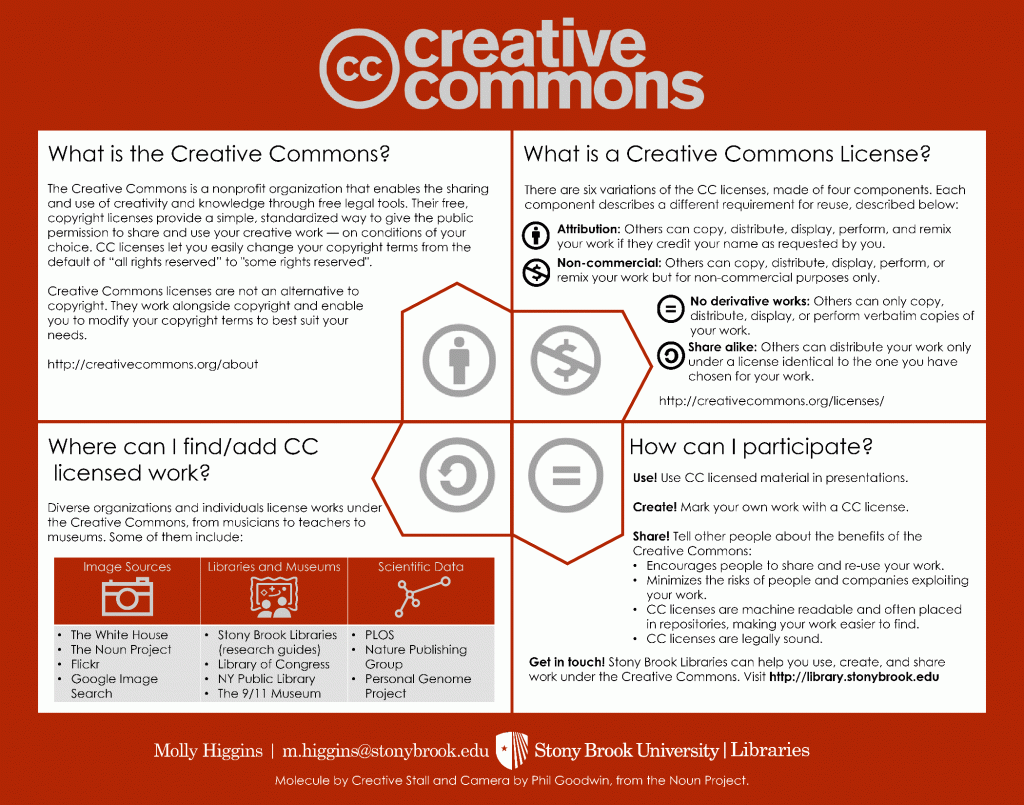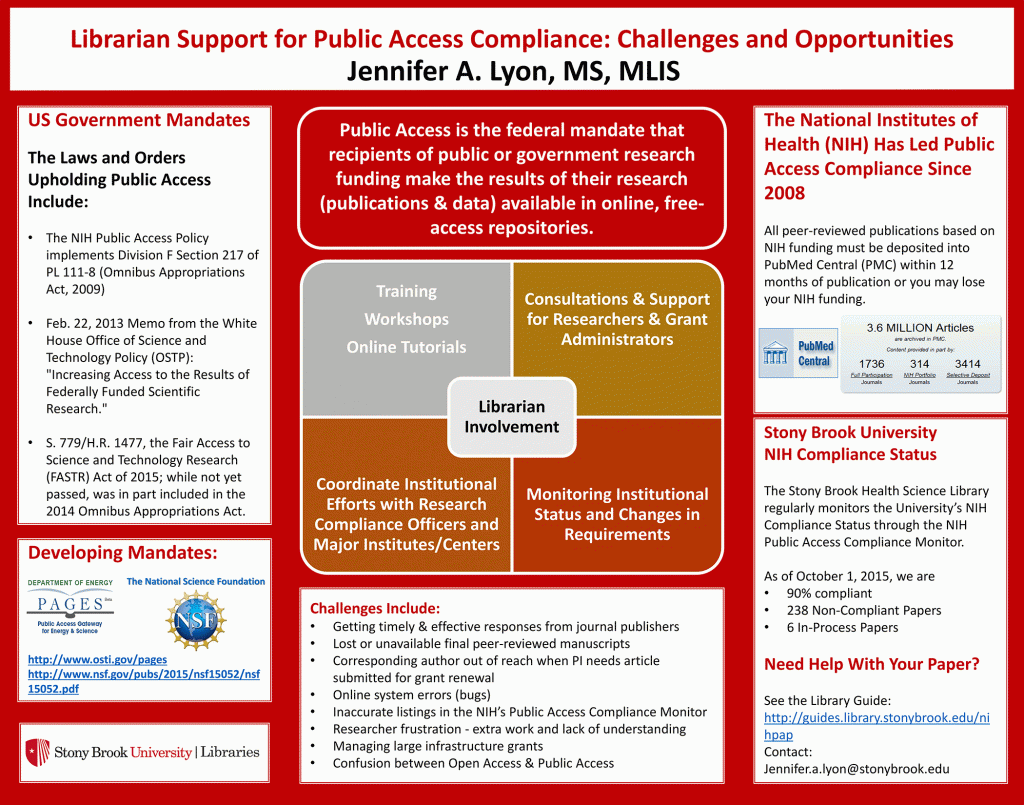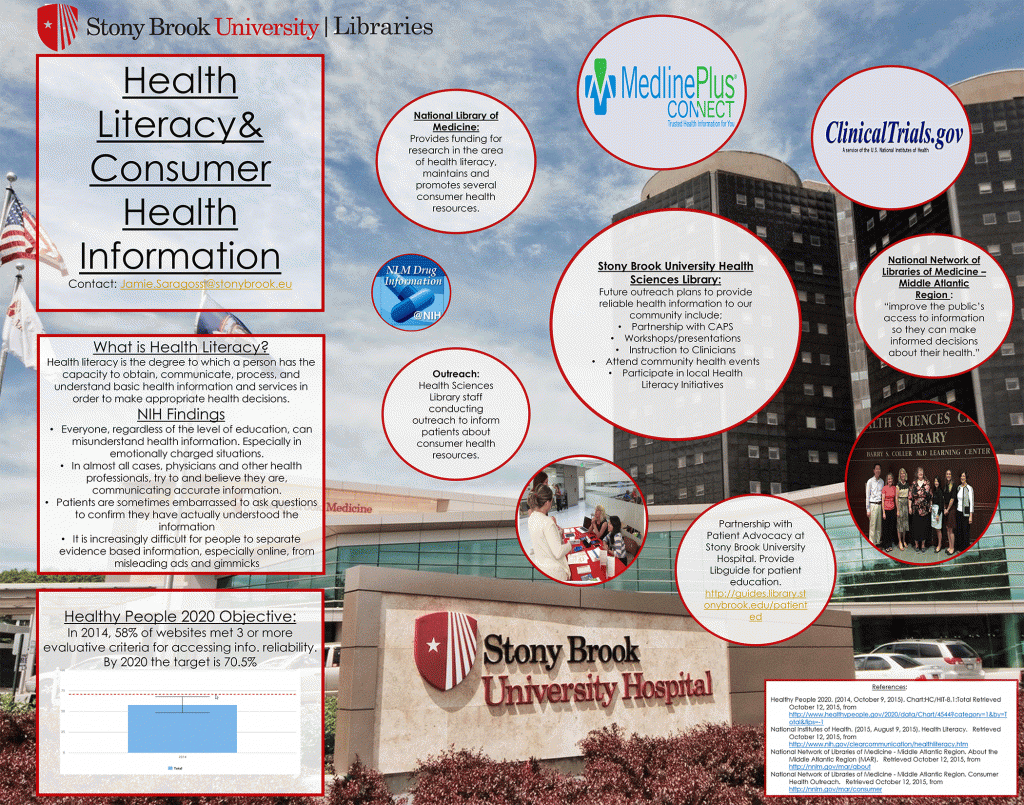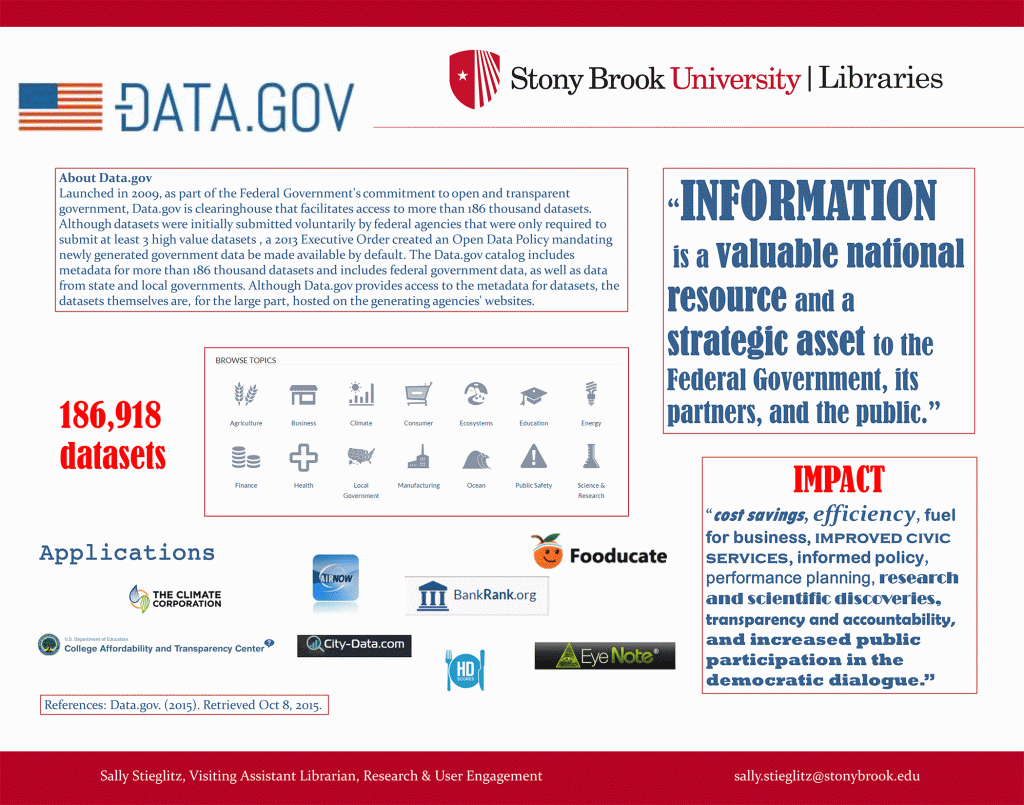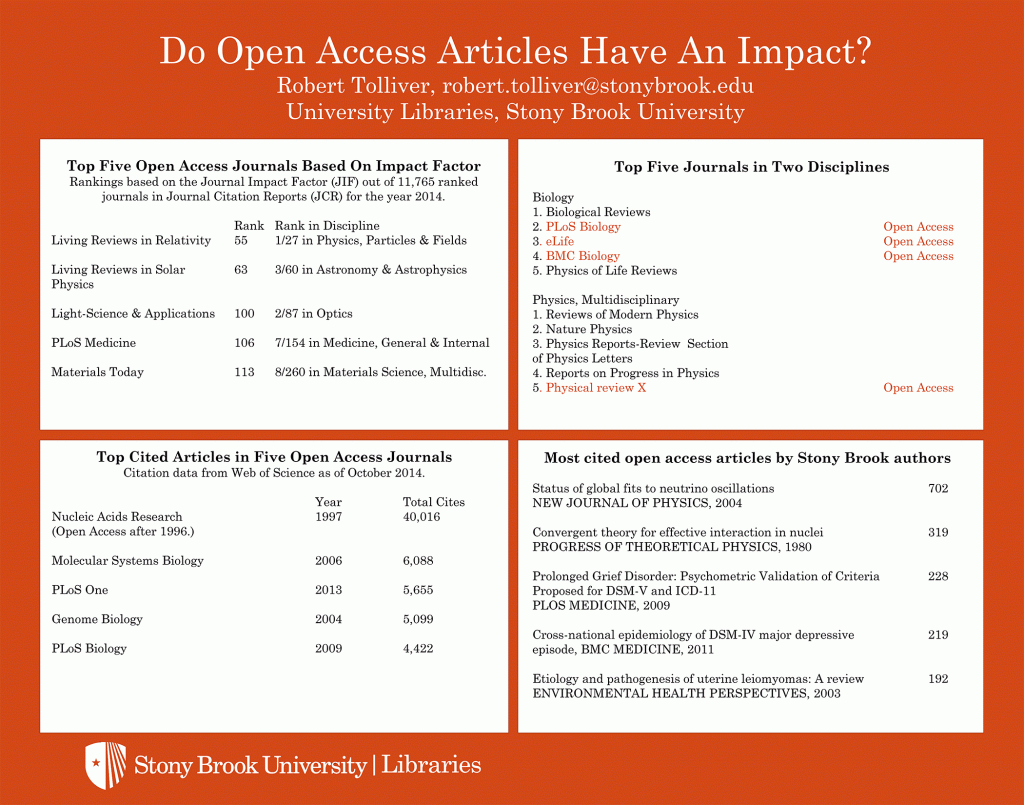The 2015 Open Access Symposium & 9th Antonija Prelec Memorial Lecture featured a poster session covering a range of open access topics. Posters were created by Stony Brook University Librarians Darren Chase, Laura Costello, Jennifer DeVito, Ann Gleason, Molly Higgins, Kate Kasten, Jennifer Lyon, Jamie Saragossi, Sally Stieglitz, Robert Tolliver, and Clara Tran.
“By applying technological tools to important questions in the humanities, the digital humanities seeks to expand understanding of scholarly inquiry in humanities fields. Digital humanists use text-mining tools and data visualization in order to engage with the human experience in new ways. Projects such as those at Stanford University use digital technologies to make new connections between text and context.”
Resources
Historypin creates a collective history through an interactive map of photos and memories.
The Open Library of Humanities provides a forum for open access journals in a variety of humanities fields, providing scholars with more choices for their research.
Orbis is the Stanford Geosaptial Network Model of the Roman World. At the confluence of technology, humanities, and history, this tool brings the digital humanities to scholars, teachers, and students.
Voyant allows researchers to upload and mine texts, supporting distant reading practices and the creation of new perspectives and data.
“Even though Open Access material is freely available online, it can be very challenging to locate. Users are often pressed for time and lack the skill and experience library personnel have in locating material. Because there are so many places in which to find Open Access resources, Resource Sharing personnel are often best positioned to quickly locate Open Access material due to their experience with search tools and knowledge of resources.”
Resources
Baich, T. (2015). Open access: help or hindrance to resource sharing? Interlending & Document Supply, 43(2), 68-75.
DeRosa, C., Cantrell, J., Carlson, M., Gallagher, P., Hawk, J., and Sturtz, C. (2010). Perceptions of Libraries, 2010: Context and Community. Retrieved from Dublin, OH: http://www.oclc.org/content/dam/oclc/reports/2010perceptions/2010perceptions_all.pdf
Morrison, H. G. (2006). The Dramatic Growth of Open Access: Implications and opportunities for resource sharing. Journal of Interlibrary Loan, Document Delivery & Electronic Reserves, 16(3)
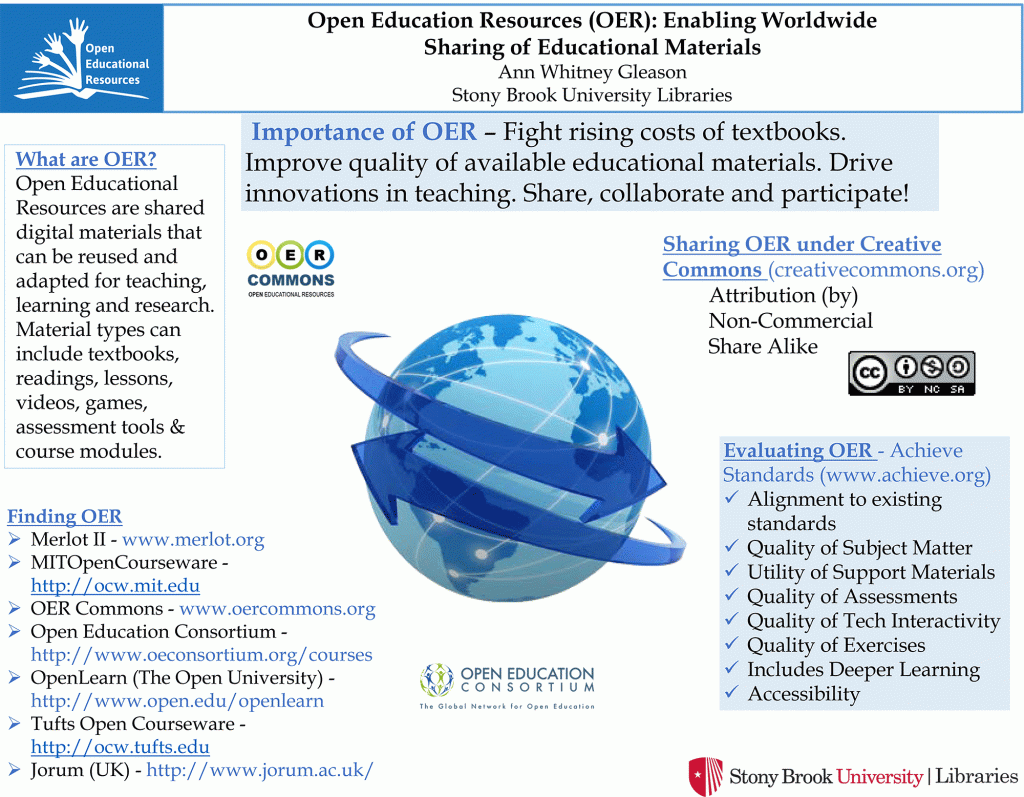
“Open Educational Resources (OERs): Enabling Worldwide Sharing of Educational Materials” by Ann Whitney Gleason
“Open Educational Resources are shared digital materials that can be reused and adapted for teaching, learning and research. Material types can include textbooks, readings, lessons, videos, games, assessment tools & course modules. ”
Resources
OpenLearn (The Open University)
Stony Brook University Libraries Open Education Guide
“The Creative Commons is a nonprofit organization that enables the sharing and use of creativity and knowledge through free legal tools. Their free, copyright licenses provide a simple, standardized way to give the public permission to share and use your creative work — on conditions of your choice. CC licenses let you easily change your copyright terms from the default of “all rights reserved” to ‘some rights reserved’.”
Resources
About the Licenses – Creative Commons
“The Stony Brook Health Science Library regularly monitors the University’s NIH Compliance Status through the NIH Public Access Compliance Monitor. As of October 1, 2015, we are: 90% compliant • 238 Non-Compliant Papers • 6 In-Process Papers”
Resources
Stony Brook University Libraries NIH Public Access Policy Guide
Researcher Funder Public Access Requirements
“Health literacy is the degree to which a person has the capacity to obtain, communicate, process, and understand basic health information and services in order to make appropriate health decisions .”
Resources
Stony Brook University Libraries Patient Education Guide
“Open government data is important because the more accessible, discoverable, and usable data is the more impact it can have. These impacts include, but are not limited to: cost savings, efficiency, fuel for business, improved civic services, informed policy, performance planning, research and scientific discoveries, transparency and accountability, and increased public participation in the democratic dialogue. ”
Resources
Resources
PLoS Biology features works of exceptional significance, originality, and relevance in all areas of biological science, from molecules to ecosystems, including works at the interface of other disciplines, such as chemistry, medicine, and mathematics.
eLife Publishes research in the life sciences and biomedicine, from the most fundamental and theoretical work, through to translational, applied, and clinical research.
BMC Biology publishes peer-reviewed research and methodology articles of special importance and broad interest in any area of biology, as well as commissioned reviews, opinion pieces, comment and Q&As on topics of special or topical interest.
Physical Review X aims to publish, as timely as possible, a limited number of key papers from all areas of pure, applied, and interdisciplinary physics, that merit broad dissemination and high visibility. PRX’s mission is to disseminate innovative and impactful research advances to the broad science and engineering communities under its open access publishing model.
“A survey of Stony Brook University faculty awareness and use of author identifiers and researcher networking profiling systems and professional use of social media was conducted in April 2015. The survey data will be utilized to improve library services in scholarly communication, research networking, and research impact.”
Resources
ORCID ORCID provides a persistent digital identifier that distinguishes you from every other researcher and, through integration in key research workflows such as manuscript and grant submission, supports automated linkages between you and your professional activities ensuring that your work is recognized.
Stony Brook University Libraries Researcher Name Authority Guide
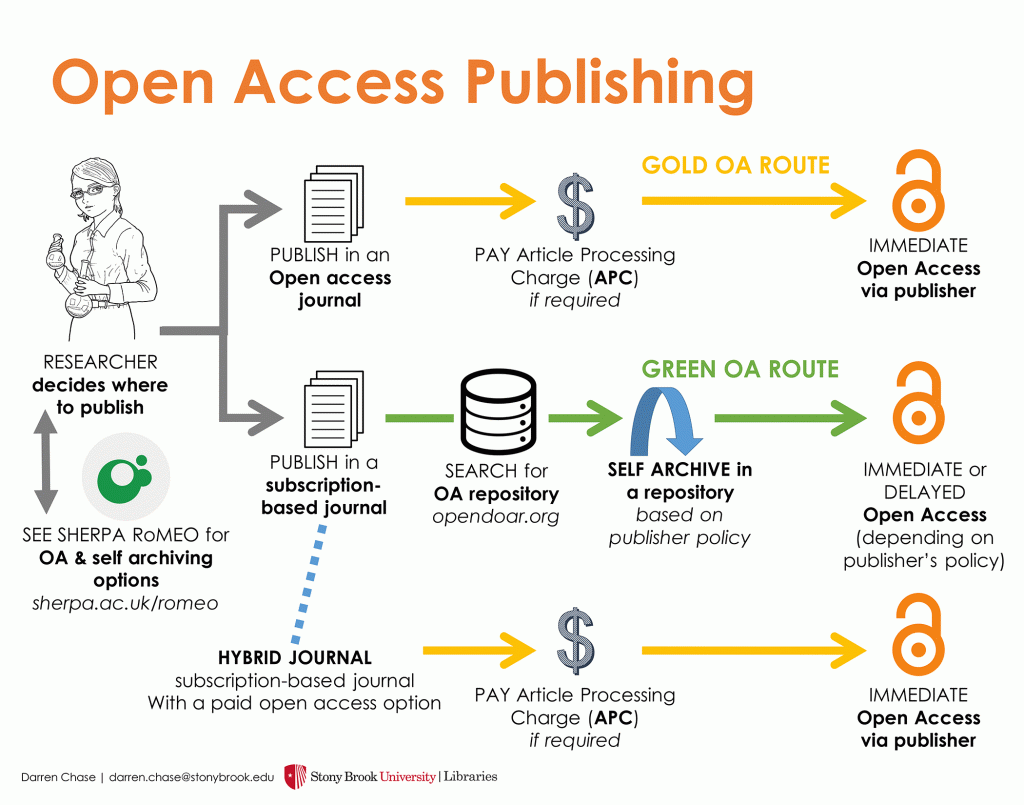 “Open Access Publishing” by Darren Chase
“Open Access Publishing” by Darren Chase
“open access applies to ‘digital, online, free of charge, and free of most copyright and licensing restrictions’. What it means to academia and research is that the primary barrier to access, price, is removed from the equation, allowing free access to peer-reviewed, scholarly works, books, and just about any other electronic print material with the designation.”
Resources
Stony Brook University Libraries Scholarly Communication Toolkit

